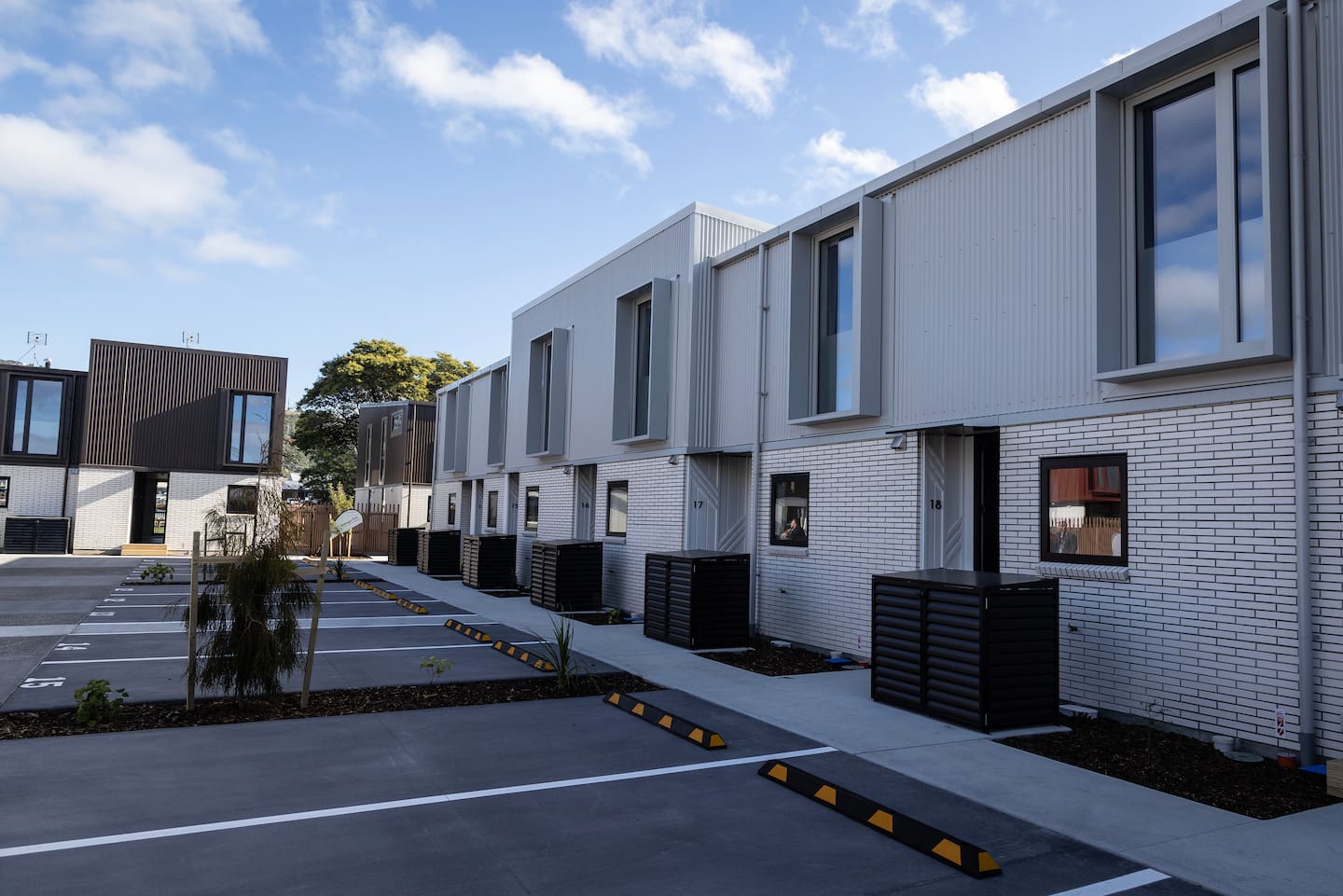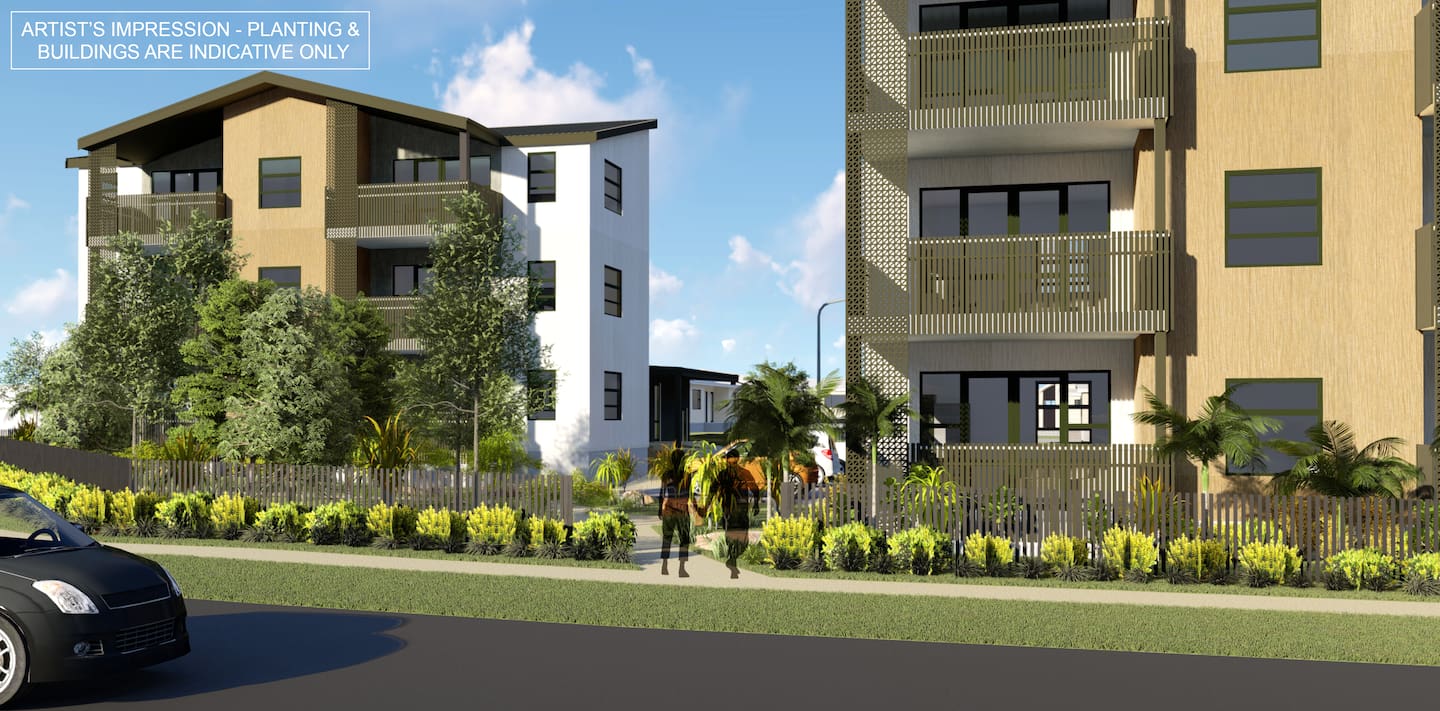PHOTO: Kāinga Ora. FILE
Massive Cost of Kāinga Ora ‘Container Homes’ Raises Eyebrows
A Kāinga Ora housing project in Rotorua, which saw the construction of twelve one-bedroom apartments, has drawn attention due to its staggering costs. Described by some as resembling “container homes,” each unit cost more than $630,000 to build, with the entire project amounting to $7.6 million. Despite being completed, the apartments are still awaiting official consent before tenants can move in.
The development, consisting of three two-storey blocks with four apartments each, is located on the corner of Malfroy Road and Ranolf Street. Kāinga Ora has since admitted that under the current government, such an expensive project would not have been approved.
Industry Experts Express Shock
Rotorua developer Tony Bradley, who has previously worked on Kāinga Ora projects, was stunned by the costs. “Oh my God,” he responded when informed of the figures. He asserted that his developments were of higher quality and significantly cheaper.
Kāinga Ora’s Bay of Plenty regional director, Darren Toy, defended the price, stating that it included costs for off-site manufacturing, transportation, infrastructure, foundations, and on-site construction. However, he acknowledged that recent one-bedroom units built across the country ranged from $325,000 to $520,000, excluding land costs, and that a project at this cost level would not proceed today.
SUPPORT LOCAL THEY SAY: Kāinga Ora isn’t putting wool carpet into new state houses
Delays in Tenant Move-In
The units, which were placed on-site in April 2024, took nine months to complete. They were officially blessed by local Māori in January, with tenants expected to move in by February. However, the project is still awaiting a Code Compliance Certificate (CCC). Toy stated that the CCC should be approved within a week, after which tenants will be able to move in after signing agreements and organizing furniture.
 Tony Bradley’s homes on Lake Rd. Photo / Andrew Warner
Tony Bradley’s homes on Lake Rd. Photo / Andrew Warner
The Role of Off-Site Manufacturing
The project was part of an initiative by the previous Labour Government to boost off-site manufacturing in social housing. Given the limited capacity of New Zealand’s construction market at the time, Kāinga Ora worked with local suppliers who had overseas manufacturing facilities. The units were manufactured abroad and shipped to New Zealand, leading to further delays.
Kāinga Ora now operates under a new housing delivery system that prioritizes cost-effectiveness, reliability, and speed. This shift follows a review led by Sir Bill English, which found the agency underperforming and financially unviable. As a result, the government is reassessing its social housing plans, including off-site manufacturing methods.
 What proposed three-storey Kāinga Ora apartments on the corner of Ranolf St and Malfroy Rd will look like. Photo / Supplied
What proposed three-storey Kāinga Ora apartments on the corner of Ranolf St and Malfroy Rd will look like. Photo / Supplied
Future of Rotorua Housing Projects
Currently, 10 proposed Rotorua projects, totaling 64 homes, are under government assessment. This includes plans for a three-storey apartment complex with 24 homes, which was intended as the final phase of the Malfroy Road and Ranolf Street development. Despite obtaining resource consent, the project’s final approval remains uncertain.
Meanwhile, developer Tony Bradley remains critical of the Kāinga Ora costs, pointing out that his developments on Lake Road and Fairy Springs Road cost about $400,000 per home. He noted that his homes, built locally using Bay of Plenty tradespeople, were completed faster and were rated as sustainable, earning a Green Star certification.
With cost scrutiny increasing, Kāinga Ora is now focused on delivering social housing more efficiently. Whether these changes will lead to significant savings remains to be seen.

Four of the completed one-bedroom apartments. Photo / Kelly Makiha
SOURCE: NZHERALD














